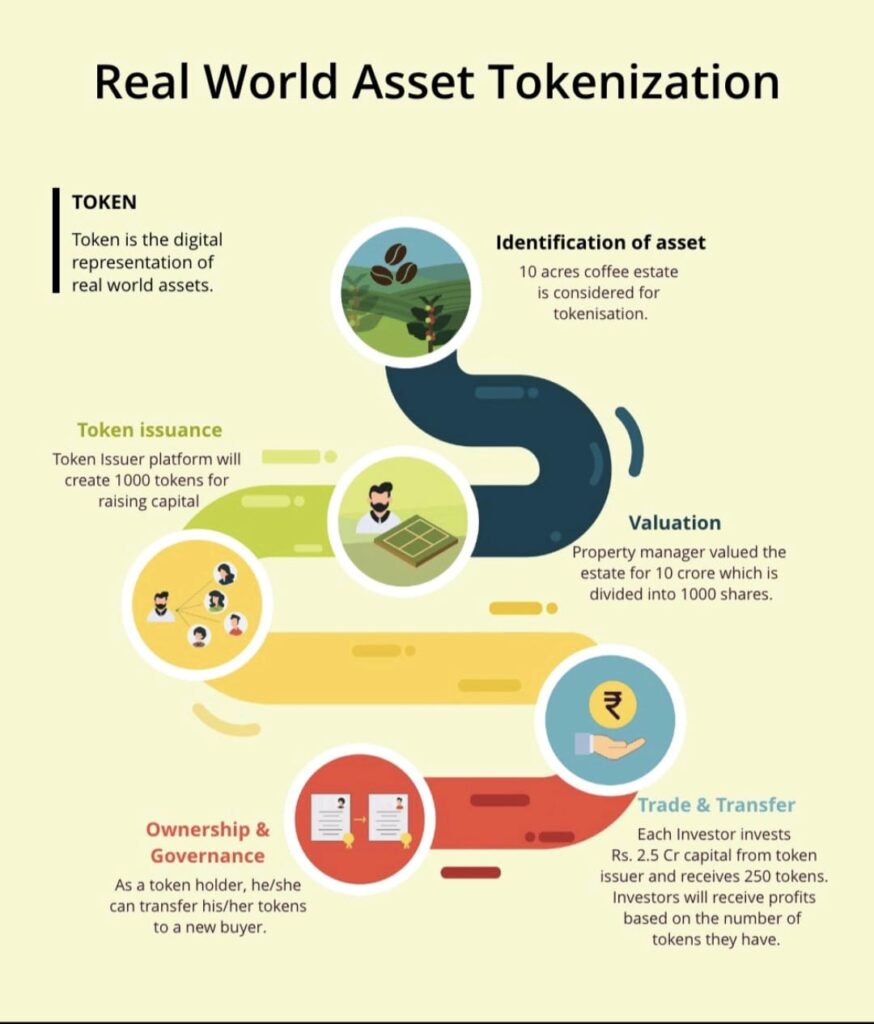Tokenization in finance is a process of converting sensitive or valuable assets, such as payment card data or real-world assets, into digital tokens that can be handled, stored, or traded securely, often on decentralized platforms. Below is a detailed explanation of the basics of how tokenization happens.
Table of Contents

What Is Tokenization?
Tokenization is the process whereby sensitive data is replaced by a non-sensitive equivalent called a token. This token is a unique, randomly generated identifier that represents the original data but has no exploitable meaning or value outside the system that created it. In the context of finance, it is primarily used to secure payment information, such as credit or debit card numbers, or to digitise real-world assets for blockchain-based trading.
Why Tokenization Is Important
- Data Security: Tokenization reduces the risk of sensitive data exposure by replacing it with a token that cannot be reversed or used fraudulently if intercepted.
- Compliance: Helps businesses comply with regulatory standards like PCI DSS by ensuring sensitive information is not stored or transmitted insecurely.
- Efficiency: Enables quick and secure digital transactions by using tokens instead of the original data.
- Innovation: Facilitates the emergence of digital finance, including decentralized finance (DeFi) and digital asset trading by creating tradable token representations of physical or financial assets.
The Tokenization Process: Step-by-Step
1. Data Collection
The process begins when a customer or an entity provides sensitive data to be tokenized. For example, a customer entering their credit card details during an online transaction or an asset owner deciding to tokenize a physical asset.
2. Tokenization Request
The sensitive data is sent securely to a tokenization service. This service can be part of a payment processor, a third-party token service provider, or a blockchain protocol designed to tokenize assets.
3. Token Generation
The tokenization service generates a unique token through secure algorithms. This token is a random or structured alphanumeric string that replaces the sensitive data. Unlike encryption, tokenization does not use a key to revert the token to original data directly; instead, the mapping is stored securely elsewhere.
4. Secure Storage of Original Data
The original sensitive data is securely stored in a highly protected token vault or database. Only authorized systems can access this vault to map tokens back to the original data when necessary for processing.
5. Token Usage
For transactions, the token replaces the sensitive data across payment systems or trading platforms. Merchants and service providers handle only this token, which has no value outside the secure ecosystem, reducing exposure to breaches or theft.
6. De-tokenization (if needed)
When required (like payment authorization), the tokenization service or the token vault securely translates the token back to the original sensitive data within authorized, compliant environments to complete the transaction.
7. Token Lifecycle Management
Tokens may be single-use or reusable depending on the application, such as recurring payments or maintaining asset ownership records. The token services manage token expiration, updates, and deactivation securely.
Tokenization in Payment Processing
When a customer makes an online payment, the card number (Primary Account Number or PAN) is replaced by a token:
– The customer enters card details on a merchant’s site.
– The payment gateway sends this data to a tokenization provider.
– A token replaces the card number and is sent back to the merchant.
– The merchant processes payment using the token.
– The token maps to the actual card number only within the token vault of the provider.
– Each new transaction generates a new token for security.
This process protects the cardholder’s information from being exposed or stolen during the transaction.
Tokenization for Real-world Assets
Beyond payments, tokenization is used to digitize tangible assets like real estate, art, commodities, or financial instruments:
- Asset ownership details and rights are converted into digital tokens on a blockchain.
- These tokens can be divided, sold, traded, or pledged as collateral.
- Token holders have a verified claim to the asset, governed by smart contracts.
- This process increases liquidity and access to fractional ownership.
Types of Tokenization
1. Network Tokenization:
Managed by card networks (Visa, Mastercard), tokens are linked to devices and transactions, and updated in real time for security.
2. PCI Tokenization:
Managed by merchants or gateways, replacing card data at specific endpoints to comply with PCI DSS.
3. Digital Wallet Tokenization:
Used for wallets like Apple Pay or Google Pay, linking tokens to specific devices to protect card data during mobile transactions.
Benefits of Tokenization
- Enhanced Security: Tokens cannot be reverse-engineered, reducing fraud risk.
- Customer Confidence: Consumers feel safer making digital payments.
- Reduced Compliance Burden: Merchants handle tokens, not raw card data.
- Operational Efficiency: Simplifies payment systems by delegating secure data handling to specialized services.
To learn a new word a day — Cryptowrites_daily

















